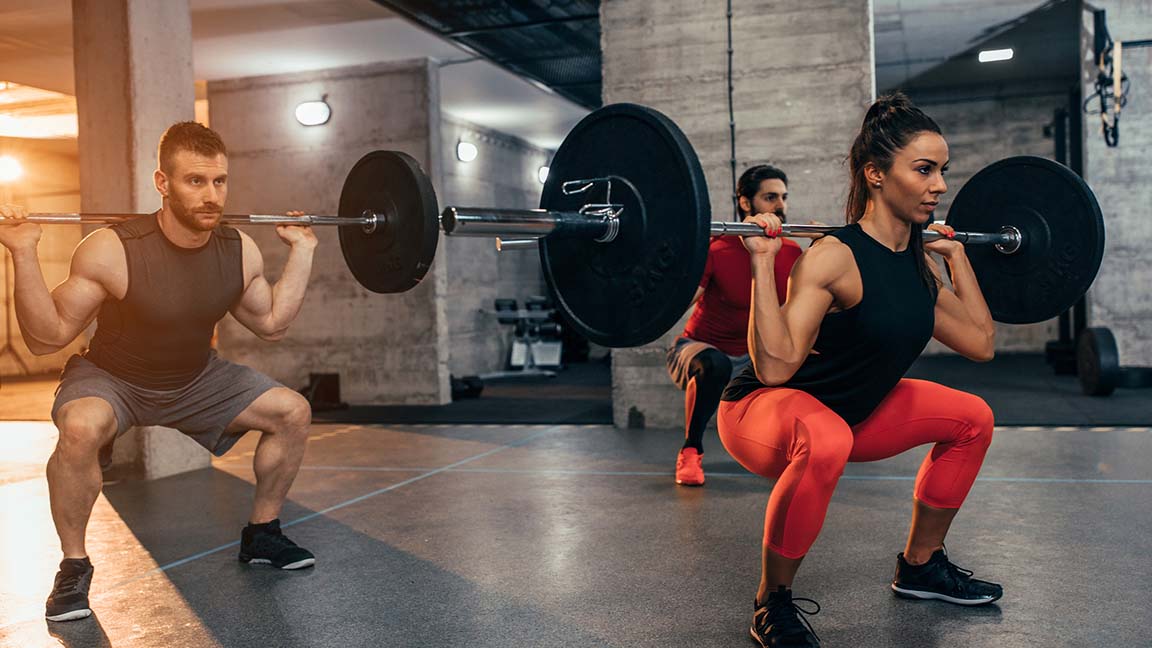Looking to introduce weightlifting into your workout routine?
Before you hit the gym and grab those dumbbells, it’s important to understand that a successful weightlifting plan requires more than just good old-fashioned will. To get the most out of your efforts, it’s important to avoid some common weightlifting mistakes.
“People are drawn to weightlifting for many reasons,” explains Michelle Dowd, an exercise physiologist at Tidelands HealthPoint Center for Health and Fitness in Pawleys Island. “They like the idea of bulking up or gaining more definition in their muscles. They are attracted by the wide variety of workouts they can pursue and the fact that weightlifting can help them shape up from head to toe.”
But, as Dowd points out, many novice lifters will make fundamental missteps either in their diet, workout habits or overall planning that can stunt or even flat-out prevent them from achieving long-term success.
Among the biggest mistakes, she says, are the following:
1. Eating Poorly
Exercise can only take you so far, Dowd says. You may workout every day, but unless you also incorporate a healthy diet into your lifestyle, you simply won’t see the results you desire.
“Losing weight will not happen without a diet that enables you to lose weight, which means taking in fewer calories than you burn,” Dowd says. “By contrast, if you are looking to add muscle, you won’t be able to do so as effectively unless you’re eating enough protein.”
2. Failing to track progress
Weightlifting is about “progressive overload,” Dowd says. In other words, you need to make sure that you are continually stressing your muscles more and more in order to make progress — either through increased weight, increased repetitions, increased sets or increased density of training. If you don’t do so, your muscles will simply not be given the stimulus to grow.
That’s why Dowd says it’s important to track of the details of your workouts — how much weight was on the bar, for which exercise and for how many repetitions. You can even make notes to help you remember what you liked, what you didn’t like, what worked well and what didn’t.
“Keeping track allows you to track your progress and make adjustments,” Dowd says. “It’s OK to be the guy at the gym with the notebook.”
3. Lifting too much
This is a common mistake, especially among highly competitive people. Everyone likes the idea of putting the big plates on the bar and everyone wants to impress their fellow gym rats.
But you should never let your ego stand in the way of a good workout — and as it turns out, Dowd says, lower weights and higher repetitions will often deliver better muscle growth than higher weights and fewer repetitions, or worse, higher weights and poor form.
“The key to muscle growth is actually total volume, and the formula for volume is weight times sets times repetitions,” she explains. “So, doing higher repetitions with less weight will equate to greater muscle growth, though there is a limit on how light you should go for optimal results. Using weights that are 65 to 80 percent of your max should make up the bulk of your training volume, with the occasional foray into heavier weight to test yourself.”
4. Resting too long between sets
Blame smartphones if you must, but the reality is far too many of us spend far too much time during our workouts not actually working out. While it’s important to rest between sets, you won’t help yourself if you’re texting, checking your email or just taking too long to get back to work.
“You will generally become more fit using shorter rest periods,” Dowd says.
5. Focusing too much on single muscles
Many people think of weightlifting in terms of single muscle groups — curls for biceps, pectoral flyes for the chest, arm extensions for the triceps. But trainers now agree that so-called “compound lifts”– exercises that challenge us by working out multiple muscle groups at once — are an essential part of any weightlifting routine.
Indeed, evidence suggests that these compound movements can speed muscle gain while helping ensure that muscles are developed proportionally throughout the body. Dowd recommends starting out any workout with two to four compound lifts, and then moving into more traditional isolation exercises.
6. Forgetting your legs and core
One of the most common weightlifting mistakes is focusing far too much on the arms and upper body and neglecting everything else. People who don’t focus on these areas may develop an imbalanced physique and struggle to maintain long-term overall progress.
“Legs and core are extremely important for sports performance and overall fitness,” Dowd says. “For older individuals especially, keeping your legs and core strong can help build muscle to maintain your ability to pick up their grandchildren or stand up from a chair. You need your legs and core to support that movement – it can’t just come from your arms and chest.”





